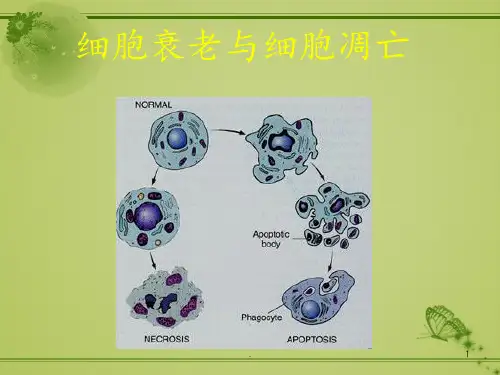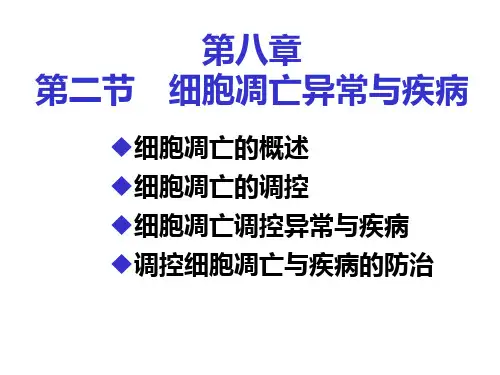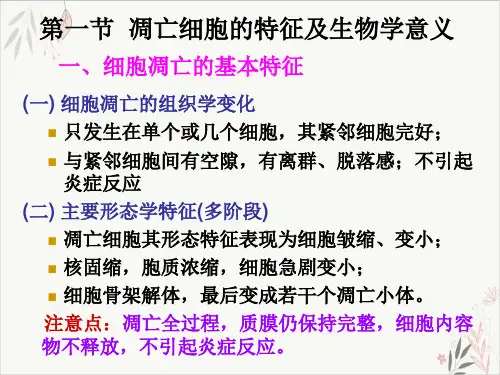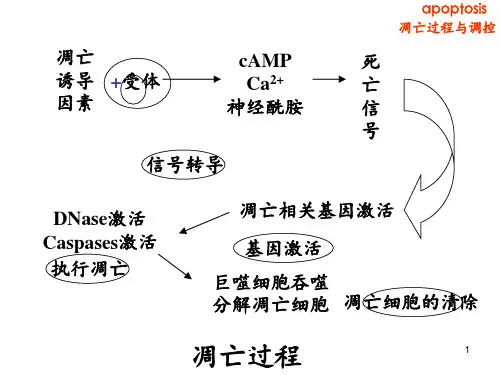(1)Fas和FasL 是细胞表面转膜蛋白,由胞浆的C 末端区、跨膜区、胞膜外的N 末端区三部分组成。 Fas胞内区含有死亡结构域DD,在传递凋亡信号中发 挥关键性作用。
(2) FasL 是Fas 的配体,膜结合型的FasL( mFasL) 可被金属蛋白酶介导的蛋白水解作用产生可溶性的 FasL ( sFasL) ,而三聚化的sFasL 才具有功能。
途径是一条主要的细胞凋亡调控途径。 (1)细胞表面的死亡受体在细胞凋亡过程中发
挥重要作用,它们通过结合特定的死亡配体而诱导 细胞凋亡。这些死亡受体在与配体结合后的几秒 钟之内,可激活效应分子天冬蛋白酶( caspase),并 在几小时之内诱导凋亡发生。
(2)死亡受体家族的发现与肿瘤的治疗密切相关, 人们注意到某些肿瘤患者在受到细菌急性感染时肿瘤 会自然消退。人们从细菌中分离到一种使肿瘤消退的 毒素,即细菌内毒素( endotoxin) 。用这种内毒素处 理过的小鼠血液含有诱导肿瘤坏死的因子,不久揭开 了对TNF 受体膜蛋白超家族的研究。死亡受体均属于 肿瘤坏死因子受体( TNFR) 超家族的成员。
Figure 2: Graphic illustration showing the organization of mammalian initiator proteases (procaspases)having either CARD (e. g. caspase-2 and 3) or two DEDs (e. g. caspase8) associated with long prodomain. The proteolytic cleavage (shown by arrow) takes place at specific sites during the production of the active enzyme. The active site of a caspase is determined by the four loops (L14).Monomer form of caspases are generally formed by two subunits, i. e., a large (~17-21 kDa) and a small (~10-13k Da) subunit.










